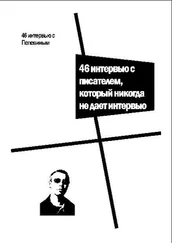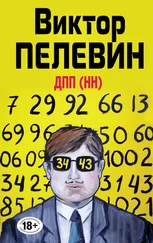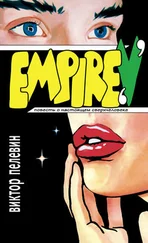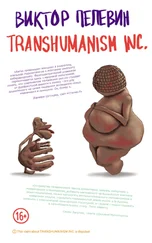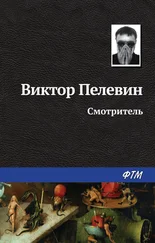Виктор Пелевин - Babylon
Здесь есть возможность читать онлайн «Виктор Пелевин - Babylon» весь текст электронной книги совершенно бесплатно (целиком полную версию без сокращений). В некоторых случаях можно слушать аудио, скачать через торрент в формате fb2 и присутствует краткое содержание. Жанр: Современная проза, на английском языке. Описание произведения, (предисловие) а так же отзывы посетителей доступны на портале библиотеки ЛибКат.
- Название:Babylon
- Автор:
- Жанр:
- Год:неизвестен
- ISBN:нет данных
- Рейтинг книги:5 / 5. Голосов: 1
-
Избранное:Добавить в избранное
- Отзывы:
-
Ваша оценка:
- 100
- 1
- 2
- 3
- 4
- 5
Babylon: краткое содержание, описание и аннотация
Предлагаем к чтению аннотацию, описание, краткое содержание или предисловие (зависит от того, что написал сам автор книги «Babylon»). Если вы не нашли необходимую информацию о книге — напишите в комментариях, мы постараемся отыскать её.
Babylon — читать онлайн бесплатно полную книгу (весь текст) целиком
Ниже представлен текст книги, разбитый по страницам. Система сохранения места последней прочитанной страницы, позволяет с удобством читать онлайн бесплатно книгу «Babylon», без необходимости каждый раз заново искать на чём Вы остановились. Поставьте закладку, и сможете в любой момент перейти на страницу, на которой закончили чтение.
Интервал:
Закладка:
He was soon bored just lying there. He got up, lit a cigarette and walked around the flat again. Reaching the closet, he remembered that since his adventure in the forest outside Moscow he hadn’t taken another look into the ‘Tikhamat-2’ folder. It was a classic case of displacement: not once had he recalled that he wanted to finish reading the materials in the file, although, on the other hand, he didn’t really seem to have forgotten it either. It had been exactly the same story with the acid tab, as though both of these items had been reserved for that special occasion which, in the course of normal life, never arrives. Tatarsky took down the folder from the top shelf and went back into the room. There were a lot of photographs inside, glued to the pages. One of them fell out as soon as he opened the folder, and he picked it up from the floor.
The photo showed a fragment of a bas-relief - a section of sky with large stars carved into it. In the lower part of the photograph there were two upraised arms, cut off by the edge of the shot. These were genuine stars of heaven - ancient, immense and alive. Stars like that had long ago ceased to shine for the living and continued to exist only for stone heroes in antediluvian sculptures. But then, thought Tatarsky, the stars themselves can hardly have changed since then - it’s people who’ve changed. Each star consisted of a central circle and pointed rays with bundles of sinuous parallel lines set between them.
Tatarsky noticed there were almost invisible little red and green veins twinkling around the lines, as though he was watching a badly adjusted computer monitor. The shiny surface of the photograph took on a brilliant rainbow gleam and its glimmering began to occupy more of his attention than the actual image. ‘It’s started,’ thought Tatarsky. ‘Now that’s really quick…’
Finding the page the photograph had come unstuck from, he ran his tongue across the dried-up spot of casein glue and set it back in its place. Then he carefully turned over the page and smoothed it down with the palm of his hand, so the photograph would stick properly. Glancing at the next photo, he almost dropped the folder on the floor.
The photograph showed the same face as on the lilac tab-stamp. It was shown from a different angle, in profile, but there was absolutely no doubt about it.
It was a complete photograph of the same bas-relief. Tatarsky recognised the fragment with the stars - they were small now and hard to pick out, and the arms uplifted towards them turned to belong to the tiny figure of a man standing on the roof of a house, frozen in a pose of absolute terror.
The central figure in the bas-relief, whose face Tatarsky had recognised, was several times larger than the figure on the roof and all the other figures around it. It was a man wearing a pointed iron cap with a mysterious, half-drunk smile playing about his lips. His face seemed strangely, even absurdly out of place in the ancient image - it looked so natural Tatarsky could easily have believed the bas-relief had not been made three thousand years ago in Nineveh, but some time late last year in Yerevan or Calcutta. Instead of the spade-shaped beard with symmetrical curls an ancient Sumerian was supposed to wear, the man was wearing a sparse goatee, and he looked like a cross between Cardinal Richelieu and Lenin.
Tatarsky hastily turned over the page and found the text relating to the photograph.
Enkidu (Enki fecit) was a fisherman-god, the servant of the god Enki (Lord of the Earth). He is the god of the Great Lottery and protector of ponds and canals; there are also examples of spells invoking Enkidu against various ailments of the digestive tract. He was made from clay, like Adam in the Old Testament story - the clay tablets with the questions for the Lottery were believed to be the flesh of Enkidu, and the ritual drink prepared in his temple was his blood…
It was hard to read the text - the sense wasn’t getting through to him, and the letters were shimmering and blinking in all the colours of the rainbow. Tatarsky began studying the image of the deity in detail. Enkidu was draped in a mantle covered with oval plaques and in his hands he held bundles of strings that radiated out like fans towards the ground, so that he reminded Tatarsky of Gulliver with an army of Lilliputians trying to restrain him by cables attached to his arms. None of the pools and canals Enkidu was supposed to be concerned with were to be seen anywhere - he was walking through a burning city, where the houses came up to his waist. Under his feet lay prostrate figures with their arms extended in identical gestures - looking at them, Tatarsky noted the quite definite kinship between Sumerian art and socialist realism. The most interesting detail of the image were the strings radiating from Enkidu’s hands. Each string ended in a large wheel, in the centre of which was a triangle containing the crudely traced image of an eye. There were human bodies threaded on the strings - like the fish Tatarsky used to dry in his childhood, hanging them out in the yard on a length of fishing line.
On the next page there was an enlarged fragment of the bas-relief showing the little human figures on one of the strings. Tatarsky was even slightly nauseated. With quite repulsive realism, the bas-relief showed the cable entering each human figure at the mouth and exiting from its backside. Some of the people’s arms were flung out to the sides, others were pressing their hands to their heads, and large-headed birds hung in the spaces between them. Tatarsky carried on reading:
According to tradition Endu, wife of the god Enki (another account regards her as his female hypostasis, which seems unlikely; she can also be identified with the figure of Ishtar) was once sitting on the bank of a canal and telling the rosary of rainbow-coloured beads her husband had given her. The sun was shining very brightly and Endu was overcome by sleep. She dropped her rosary, which fell into the water, where the beads scattered and sank. After this the rainbow-coloured beads decided that they were people and settled throughout the pond. They built towns and had their own kings and gods. Then Enki took a lump of clay and moulded it into the form of a fisherman. He breathed life into it and called it Enkidu. He gave him a spindle of golden thread, and told him to go down into the water and gather up all the beads. Since the name ‘Enkidu’ contains Enki’s own name, it possesses special power and the beads are obliged to submit to the will of the god and string themselves on to the golden thread. Some researchers believe that Enkidu gathers up the souls of the deceased and transports them on his threads to the kingdom of the dead; numerous images have been preserved in which merchants and officials are shown appealing to Enkidu for help. These prayers contain a repeated plea to ‘raise the strong higher on the thread of gold’ and to ‘endow with the earthly enlility’ (see ‘Enlil’). There are also eschatological motifs to be found in the myth of Enkidu-as soon as Enkidu gathers everyone living on earth on to his thread life will cease, because they will once again become beads on the necklace of the great goddess. This event, due to happen at some point in the future, is identified with the end of the world.
The ancient legend contains one motif for which it is difficult to provide an explanation: several versions describe in detail exactly how the bead-people crawl up along Enkidu’s threads. They don’t use their hands for this - their hands serve to cover their eyes and ears or to beat off the white birds that attempt to tear them from the threads. The bead-people ascend the string by first swallowing it and then grasping it alternately with their mouths and anuses. It is not clear how such Pantagruelesaue details come to be found in the myth of Enkidu - possibly they are echoes of another myth that has been lost.
Читать дальшеИнтервал:
Закладка:
Похожие книги на «Babylon»
Представляем Вашему вниманию похожие книги на «Babylon» списком для выбора. Мы отобрали схожую по названию и смыслу литературу в надежде предоставить читателям больше вариантов отыскать новые, интересные, ещё непрочитанные произведения.
Обсуждение, отзывы о книге «Babylon» и просто собственные мнения читателей. Оставьте ваши комментарии, напишите, что Вы думаете о произведении, его смысле или главных героях. Укажите что конкретно понравилось, а что нет, и почему Вы так считаете.

